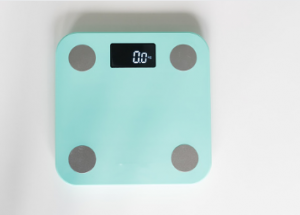A digital weighing scale is an accurate and user-friendly tool for measuring weight. In addition, these devices have greater precision and are far more affordable compared to an analog scale. Strain gauge technology is one of the most widely used digital scales, thanks to its low manufacturing costs and precision. These characteristics make them an excellent choice for many applications. The following are some features to look for in a digital weighing scale.
 Construction
Construction
In the construction industry, weighing digital scale is very important. Heavy materials must be measured properly and transported in the correct quantities. Incorrect weights or quantities can cause accidents and increase costs. Scales have been around for centuries. They have been used for basic balancing beams and sundials. However, their modern application in the construction industry is unrivalled. With the help of weighing scales, construction workers can accurately weigh materials and reduce the risk of accidents. Check here to see more items.
Construction sites operate multiple vehicles at once. In addition, many of them carry goods from one site to another. Using weighing scales can help construction businesses avoid causing accidents by overloaded vehicles. They can also save on fuel and maintenance costs by avoiding over-loading. In addition, they ensure the safety of both drivers and other road users. As you can imagine, managing a large fleet of vehicles requires attention and proper maintenance.
Operation
There are several parts of a digital weighing scale. In addition to the display, the weighing scale also has a load cell and a microcontroller. The load cell contains the weight measurement device. The load cell has four or six wires connected to it, and the digital display connects to the microcontroller. The LCD screen displays the current weight of the load, and the readouts show the mass. The calibration weight is used to calibrate the scale and set the final scale factor and offset value. This calibration is essential before uploading the weighing code to the Arduino board.
A load cell is the most important part of a digital scale. This device measures the weight of an object by converting the force exerted by the object to an electrical signal. There is only one load cell on a small scale, while a floor scale has four or eight. On the other hand, a truck scale can have eight cells. Unlike a traditional scale, the Smart Weighing Scale measures the weight of an object by using multiple cells and an LCD. Check here to see more items.
Mechanical design
The mechanical design of a digital weighing scale uses a load cell, which bends down when weight is applied. The load cell is made from a metal foil or track bonded to a printed circuit board. The backing of the strain gauge may be flexible or rigid, depending on the scale’s requirements. The result is a digital display of the weight of the object. In addition, some scales have raised pegs on the corners for easier placement.
Another design of a digital weighing scale relies on the principles of equilibrium and deformation to detect weight. This principle has been used in other scales for years and is considered a superior alternative to other scales. An ideal digital scale can detect 0.25 lb (0.12 kg) weight. By using this principle, a scale is highly accurate. In addition to accuracy, a digital weighing scale can be calibrated to within 0.125 lb (0.8 kilograms).
Accuracy
The accuracy of a digital scale is often the first question that comes to your mind. This measurement device can give you the precise results you need. We used dial scales to measure different weights in the study and then compared them to digital scales. The results showed a significant difference between the scales at different weights, especially at the 75 kg test load. We also looked at the differences between scale precision and accuracy.
To test a digital weighing scale’s accuracy, place the item you want to weigh on it and push the “calibration” button. This button is normally labelled “Cal/Mode” or “Cal” on the scale. Once you have selected a weight, please place it in the centre of the scale. Make sure that the weight does not move or wobble during the process. Most scales ship with a pre-programmed weight, but you may also want to purchase a specialized calibration kit. Check here to see more items.
Body composition analysis
A digital weighing scale for body composition analysis is a great addition to your home gym. These body composition scales use a Bioimpedance Analysis (BIA) principle to determine your fat-to-muscle ratio. Because fat is denser than muscle, a BIA scale measures your body weight in grams of fat per kilogram of lean body mass. In addition, many of these scales connect to a smartphone app to provide measurements over a longer period.
These scales can quickly estimate body composition but are less accurate than other body composition measurements. A study published in 2016 found that patients with Type 2 diabetes and hypertension had more accurate results than non-diabetic individuals. Each scale took about 15 minutes to set up and take the patient’s weight. It could also not be replicated among patients of the same bodyweight range. Furthermore, it would not allow the estimation of intraindividual variability, which limits its application to clinical practice.
